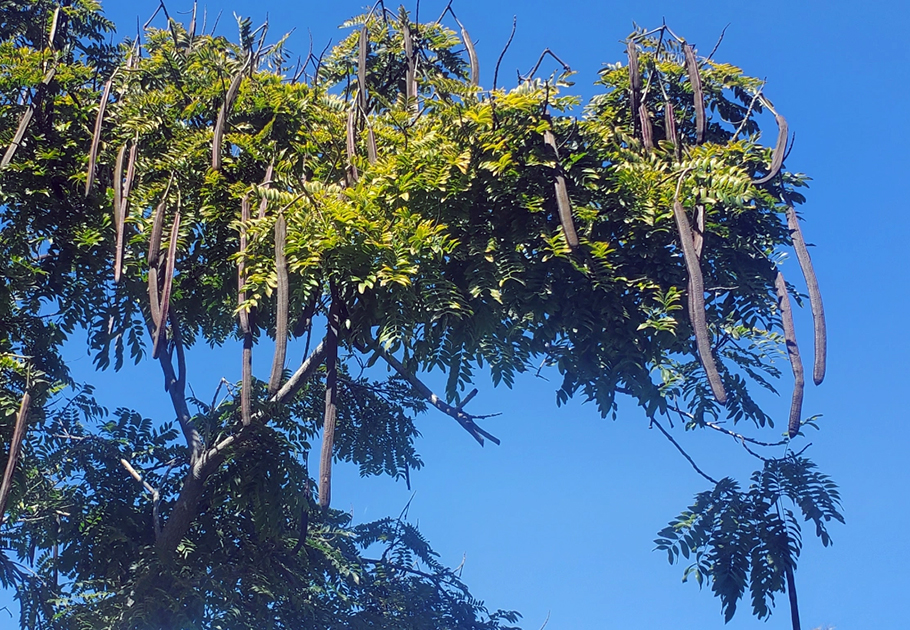
Trees for Shade and Forages
Reposted with permission from REGENETARIANISM

A few years back, in regards to the topic of growing sugar beets in regenerative systems, I exchanged a few emails with my friend Dale Strickler. Dale is an agronomist, cover crop expert and authors of numerous books including The Complete Guide to Restoring Your Soil(opens in new window).
Crops like sugar beets are very difficult to grow in regenerative systems. Dale noted that an alternative way to produce sugar was from the seed pods of honey locust trees. He suggested a book first published in 1928 by J. Russell Smith, Tree Crops: A Permanent Agriculture(opens in new window). I shortly thereafter purchased a copy. Though after this book arrived, I put it on my tall stack of books to read. I then got distracted by other interests and never got around to reading the book.
That is until more recently after this book was again mentioned on one of John Kempf’s podcasts about incorporating trees into pasture systems for shade and forages. During this discussion on John’s podcast, thorn-less honey locust were mentioned for their high yields of seed pods and ability to provide high energy forage during times when other grazed forages weren’t as available.
Here in the first video below are excerpts from that discussion. In the second video below is a discussion of different types of honey locust pods and how different livestock use them for stockpiled forages.
Honey locusts were one of a number of trees listed in J. Russell Smith’s book. Additionally honey locust are evergreen trees that fix nitrogen. They’re best suited to grow in more humid climates.
Other trees better suited for semi-arid and arid environments include carob and mesquite trees also included in J. Russell Smith book. Both of these trees are evergreen and fix nitrogen. Carob trees have deep root systems so they’re very drought tolerant. They’re actually quite common in the Los Angeles area. Though no one I’ve seen collects the pods. They’re originally from coastal areas of the Mediterranean. So they thrive in similar environments with mild climates including California and Australia. They are susceptible to frost.
The below video provides some additional information about carob trees.
Mesquite trees are indigenous to the mid-South and southwestern regions of the US and into Mexico. The seeds from their pods use to be ground into flour by different First Nations. Cattle will also consume these pods. I asked rancher Alejandro Carrillo if he had any mesquite trees on his ranch down in the Chihuahuan Desert. He said he did. So I asked him if his cattle ate the pods from these trees. And his response was that his “livestock eat them pretty well.” Since as previously noted, Mesquite trees are evergreen, they provide year round shade for cattle as well as year round root exudates for the soil.
The below video provides some additional information about mesquite trees.
J. Russell Smith’s book dedicates additional chapters to a number of other tree species that can be incorporated into silvopastures or savannas. Though I was more intrigued by those three species of trees I listed above due their potential to be incorporated into grazing systems where they can provide shade and high energy forages at times of the years when other grasses/forbs were dormant or in less energy intensive phases (i.e. not much carbs).
These trees also offer additional ways to fix carbon in above and below ground biomass including root systems and ectomycorrhizal fungi. This increases the “carbon opportunity” of grazed land. So incorporating the appropriate trees in the appropriate places are an additional way to further balance the overall planetary carbon cycle by creating carbon negative agricultural systems where a lot more carbon is fixed than emitted. (Plus such systems also provide the necessary precursors – BVOC’s , water vapor, nitrogen oxides- needed to bolster atmospheric methane sinks).
